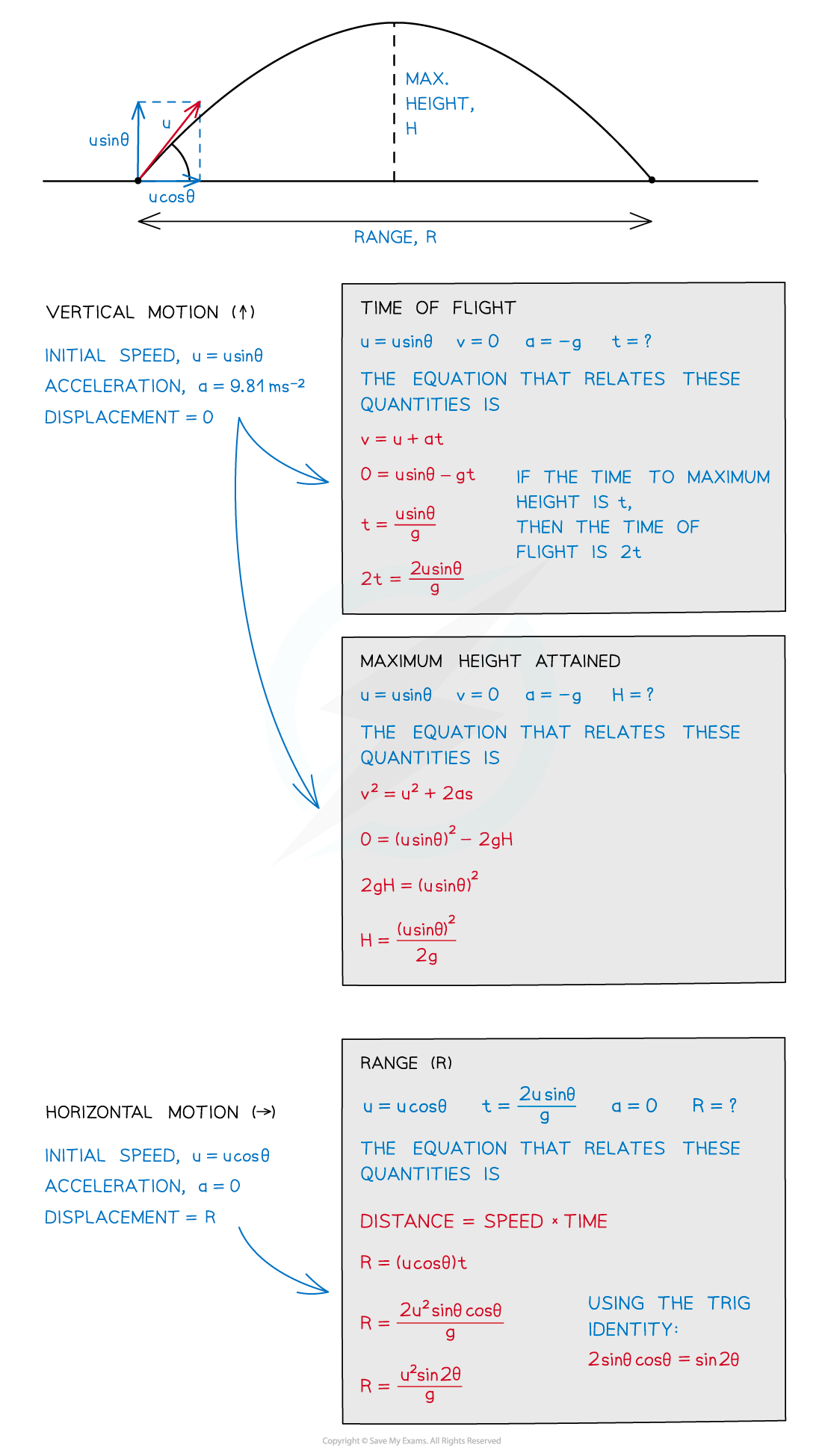Projectile Motion (Cambridge (CIE) AS Physics): Revision Note
Exam code: 9702
Projectile motion
The trajectory of an object undergoing projectile motion consists of a vertical component and a horizontal component
The vertical and horizontal components of the motion are completely independent of one another
Therefore, they need to be evaluated separately
Some key terms to know, and how to calculate them, are:
Time of flight: how long the projectile is in the air
Maximum height attained: the height at which the projectile is momentarily at rest
Range: the horizontal distance travelled by the projectile
Projectile motion calculation example

How to find the time of flight, maximum height and range
Remember: the only force acting on the projectile, after it has been released, is gravity
There are three possible scenarios for projectile motion:
Vertical projection
Horizontal projection
Projection at an angle
Let’s consider each in turn:
Worked Example
A science museum designed an experiment to show the fall of a feather in a vertical glass vacuum tube.
The time of fall from rest is 0.5 s.

What is the length of the tube, L?
Answer:
Step 1: List the known quantities
Acceleration, a = 9.81 m s–2
Initial velocity, u = 0
Time, t = 0.5 s
Displacement, s = L = ?
Step 2: State the relevant equation of motion
The equation linking a, u, t and s is
Step 3: Substitute in the values
Worked Example
A motorcycle stunt-rider moving horizontally takes off from a point 1.25 m above the ground, landing 10 m away as shown.

What was the speed at take-off?
Answer:
Step 1: List the known quantities for the vertical motion
Displacement, s = 1.25 m
Acceleration, a = 9.81 m s–2
Initial velocity, u = 0
Time, t = ?
Step 2: State the relevant equation for the vertical motion
Step 3: Rearrange for the time, t
Step 4: Substitute the values
Step 5: List the known quantities for the horizontal motion
Displacement, s = 10 m
Acceleration, a = 0
Time, t = 0.5 s
Initial velocity, u = 0?
Step 6: Calculate the initial velocity, u
Worked Example
A ball is thrown from a point P with an initial velocity u of 12 m s-1 at 50° to the horizontal.
What is the value of the maximum height at Q?

Answer:
Step 1: List the known quantities
Initial velocity, u = 12sin(50) m s–1
Acceleration, a = –9.81 m s–2
Final velocity, v = 0
Vertical displacement, s = H = ?
Step 2: State the relevant equation of motion
Step 3: Rearrange for the displacement, s
Step 4: Substitute in the values
Examiner Tips and Tricks
In the last question, the final velocity can be set to zero because we are only concerned with the object's motion up until it reaches point Q. This is a mathematical trick that simplifies the calculation.
Make sure you don’t make these common mistakes:
Forgetting that deceleration is negative as the object rises
Confusing the direction of sin θ and cos θ
Not converting units (mm, cm, km etc.) to metres
You must be confident with resolving velocity (velocity, displacement) into their horizontal and vertical components. Revise this in the Scalars and Vectors topic.

Unlock more, it's free!
Did this page help you?